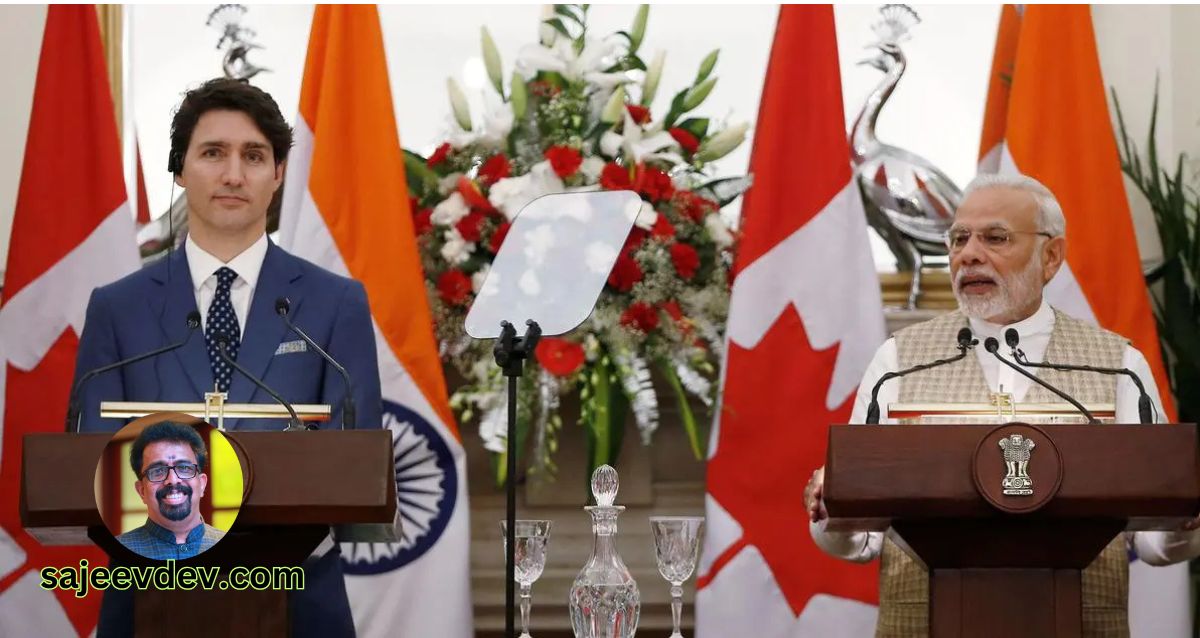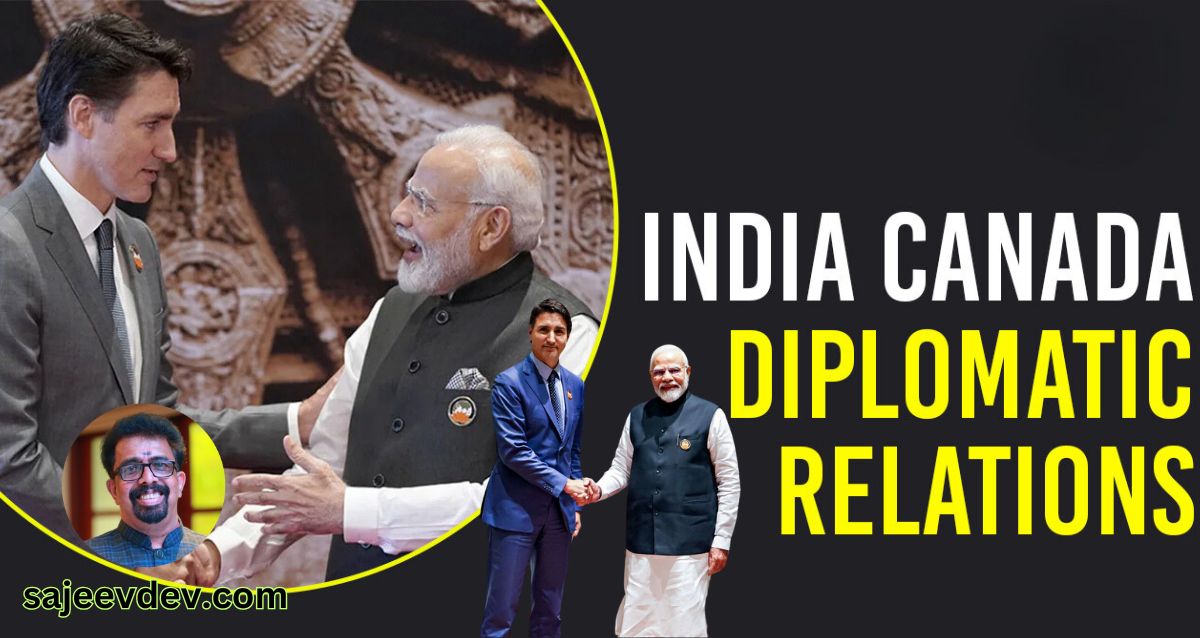The disengagement pact between India and China marks a critical milestone in the ongoing dialogue aimed at resolving the long-standing border tensions between the two nations
The disengagement pact between India and China marks a critical milestone in the ongoing dialogue aimed at resolving the long-standing border tensions between the two nations. The agreement, finalized after significant negotiations, encompasses vital measures meant to restore peace along the Line of Actual Control (LAC), which has witnessed numerous confrontations in recent years. With a shared history of disputes dating back several decades, this pact represents a proactive approach to diminish hostilities and foster stability in a region marked by strategic uncertainties.
The genesis of this disengagement strategy stems from escalating military incidents that intensified in 2020, particularly in the Galwan Valley, resulting in loss of lives and heightened geopolitical concerns. Both countries recognized the urgency of de-escalation and the necessity of formulating a structured framework to address the complex challenges along the LAC. The recent pact aims to facilitate a schedule for the withdrawal of troops and restoration of buffer zones, thus paving the way for diplomatic dialogues to continue without the overshadowing presence of military tensions.
This agreement holds significant implications not just for India and China but also for regional stability in Asia and beyond. The LAC has long been a flashpoint, where territorial claims have led to standoffs and military confrontations, making the disengagement a crucial step towards lasting peace. As both nations implement the terms of the pact, it is vital to monitor compliance and the potential for further negotiations to address remaining disputes. Enhanced communication and transparency between the armed forces of both sides will be essential to mitigate the risks of miscalculation and foster a conducive environment for ongoing diplomacy.
Context of India-China Relations
The relationship between India and China is marked by a complex tapestry of historical interactions, underscored by both cooperation and contention. Emerging in the early 20th century, these ties saw considerable optimism, particularly after both nations gained independence in the mid-20th century, each seeking to assert its position within the global order. However, this cooperation soon faced severe trials, notably with the Sino-Indian War of 1962, which arose out of unresolved border issues and territorial ambitions. This conflict not only redefined bilateral relations but also deepened mutual distrust, leading to decades of military posturing and sporadic skirmishes along the Line of Actual Control (LAC).
In the ensuing years, several attempts have been made to reconcile differences and foster dialogue. Despite diplomatic negotiations, tensions resurfaced during incidents such as the Doklam standoff in 2017 and further clashes in 2020, which marked a significant escalation in hostilities. Each confrontation brought to light the strategic concerns of both nations regarding territorial integrity and regional dominance, culminating in a need for comprehensive discussions on security, trade, and border management.
During this dynamic period of engagement, both nations have also sought to manage their relationship through multilateral forums. Initiatives such as the BRICS summit have provided platforms for dialogue on common challenges. Yet, underlying disagreements continue to shape their interactions, complicating efforts toward sustainable peace. The historical context of India-China relations reveals a backdrop of deep-seated rivalries intertwined with occasions of collaboration, presenting an intricate portrait of two ancient civilizations navigating modern geopolitical realities. Grasping this nuanced history is vital for understanding their current engagements and future trajectories.
Impact of the Disengagement Pact on Border Stability
The recently reached disengagement pact between Indian and Chinese soldiers marks a significant step towards stabilizing the long-disputed border regions. This agreement is designed to alleviate military tensions that have historically characterized the Indo-Chinese relationship, particularly in sensitive areas such as Ladakh. By implementing measures to withdraw forces and reduce military presence, both nations aim to foster an environment conducive to peace and cooperation.
The disengagement process plays a critical role in maintaining peace along the Line of Actual Control (LAC). As troops are repositioned, the probability of inadvertent confrontations diminishes. Moreover, by ensuring that both sides adhere to the terms of the agreement, the risk of escalation into larger conflicts is significantly reduced. This stabilizing effect is essential not only for maintaining bilateral relations but also for regional security in the broader South Asian context.
This pact carries mutual benefits for both India and China. For India, a stable border is paramount to national security and defense considerations. It reinforces the Indian government’s commitment to safeguarding its territorial integrity while allowing for safe civilian coexistence in border areas. On the other hand, China stands to gain from a reduction in military tensions, which can enhance its economic initiatives and soft power projection in the region.
Furthermore, the implementation of the disengagement deal sets a precedent for future negotiations on border disputes. It demonstrates a mutual recognition that dialogue and cooperation are more constructive than aggressive posturing. Both nations are presented with an opportunity to channel their resources towards development rather than military confrontations. In conclusion, the successful execution of the disengagement pact is vital for achieving enduring stability along the border, fostering a climate where both nations can pursue their strategic interests harmoniously.
The Sweet Gesture: Symbolic Acts Between Soldiers
Following the recent disengagement pact between Indian and Chinese soldiers, a notable shift in interactions has transpired that showcases the underlying humanity amid geopolitical tensions. Instances of camaraderie, mutual respect, and shared gestures highlight the essence of soldierly bonds that transcend national boundaries. Such moments serve as poignant reminders of the personal connections that can endure, even in a landscape marked by complexities.
One particularly heartwarming example occurred along the Line of Actual Control (LAC) when Indian and Chinese troops exchanged sweets during a brief meeting. This gesture, rooted in tradition, transcended the rigid structures of military rivalry and illustrated a willingness to acknowledge each other’s presence. As soldiers from both sides shared sweets, laughter and smiles broke the atmosphere of tension. These moments reflect an intrinsic recognition of shared humanity that binds them as individuals, even amidst broader political narratives.
Moreover, during joint patrols, soldiers have been observed engaging in casual conversations, sharing stories about their cultures and customs, and even learning phrases from each other’s languages. These exchanges serve to humanize each side, creating an environment where soldiers are seen not merely as representatives of their nations but as individuals with their own stories and experiences. Such interactions build trust and foster relationships that could, in the long run, contribute to a more peaceful co-existence.
It is crucial to acknowledge that these symbolic acts, while seemingly simple, hold significant implications for bilateral relations. They embody the hope for better understanding and cooperation, proving that bonds may be formed on the foundation of mutual respect. As military personnel continue to engage kindly, these gestures pave the way for a more harmonious future, marking the beginning of what could become a lasting legacy of peace between the two nations.
Prime Minister Modi’s Visit to Russia: Balancing Act
Prime Minister Narendra Modi’s imminent visit to Russia for the BRICS summit highlights a significant moment in India’s diplomatic landscape, particularly in the context of recent developments concerning the patrolling agreement with China. As India actively engages with its neighboring countries, the timing of this summit bears critical implications for shaping its foreign policy approach towards China and further relations within the BRICS group.
The patrolling agreement, which aims to enhance peace and stability along the Line of Actual Control, is poised to improve bilateral interactions between India and China. However, the recent conflicts in the region have underscored a persistent need for India’s leadership to assert its position on strategic matters involving its borders and relationships with neighboring nations. Modi’s engagement in Russia provides a platform to address not only these issues but also to discuss broader themes of cooperation within BRICS, enhancing India’s role in a multilateral framework.
As India continues to diversify its international partnerships, Modi’s engagement with Russia signifies the balancing act that India is performing amid shifting geopolitical dynamics. By reaffirming its commitment to collaborating with Russia, India can reinforce its strategic interests while also conveying its expectations from China through a united front in multilateral discussions. This diplomatic maneuvering is crucial for ensuring that India maintains a position of strength in any negotiations that may arise post-summit.
Ultimately, Modi’s visit to Russia is emblematic of India’s broader foreign policy objectives, wherein cooperation within the BRICS framework complements its tactical efforts in managing relations with China. Navigating these complexities will be essential for India’s continued commitment to maintaining regional stability and fostering enduring partnerships in an increasingly multipolar world.
Significance of the Patrolling Agreement
The recent patrolling agreement between Indian and Chinese soldiers has substantial significance for the future interactions of both nations’ forces, especially along the Line of Actual Control (LAC). This structured approach to patrolling is designed to prevent misunderstandings and facilitate smoother interactions between the two militaries. By establishing a clear framework, the agreement seeks to delineate areas of responsibility and create protocols for patrolling, thereby allowing each side to maintain territorial integrity while minimizing the risk of confrontations.
One of the primary advantages of the patrolling agreement is that it enables both sides to monitor actions along the LAC more effectively. Regular and organized patrolling not only aids in detecting transgressions but also fosters an atmosphere of transparency. When soldiers from both nations are aware of each other’s operational movements, it significantly reduces the potential for unintentional clashes that could escalate into larger conflicts. This is particularly pertinent given the historical tensions, where miscommunication has often led to dangerous standoffs.
Furthermore, the structured nature of the patrolling arrangement encourages dialogue and cooperation between Indian and Chinese armed forces. By formally recognizing the necessity for joint monitoring, both parties are indirectly committing to non-aggressive postures and conflict resolution strategies. This could pave the way for more extensive discussions on border management and military conduct in the region, leading towards building mutual trust over time.
Overall, the patrolling agreement represents a significant step toward establishing a framework that could stabilize the relationship between Indian and Chinese forces. With effective implementation, it holds the promise of reducing disputes and fostering a more predictable border environment, benefiting both nations and enhancing regional security.
Reactions from the Global Community
The recent engagement and the subsequent gestures of goodwill between Indian and Chinese soldiers following the post-disengagement pact have captured substantial global attention. Countries around the world have expressed a mix of optimism and cautious observation regarding the developments in this critical region. The agreements forged signify a potential thawing of long-standing tensions, prompting responses from various international actors.
The United States, while commending the efforts made by both India and China, has reiterated the importance of peaceful coexistence and resolution through dialogue. U.S. officials have emphasized their support for democratic nations working collaboratively, and many analysts in Washington view this engagement as an important step towards stability in Asia. Simultaneously, there are concerns about how this development might affect the regional balance of power, particularly in light of U.S.-India relations.
Meanwhile, countries in the Asia-Pacific region, such as Japan and Australia, have welcomed the pact as a constructive move. They see it as an opportunity for enhanced cooperation among regional players, essential for collective security and economic growth. Observers have pointed out that both India and China hold significant influence in the area, and their ability to navigate differences could lead to more stability not just locally, but also in the context of global geopolitics.
Indian neighboring countries have also reacted positively, viewing the agreement as a mechanism that could pave the way for improved bilateral ties and regional harmony. Pakistan, on the other hand, has adopted a more wary stance, expressing skepticism about the longevity of the agreement and how it might impact their own security dilemmas.
In summary, the global community’s reactions to the recent engagement between Indian and Chinese soldiers illustrate a complex tapestry of hope and caution. The ongoing developments are likely to influence international relations significantly, as stakeholders recalibrate their diplomatic strategies in response to this newfound cooperation.
Future Prospects for India-China Relations
The recent disengagement pact between Indian and Chinese soldiers along the Line of Actual Control (LAC) marks a pivotal moment in the bilateral relationship between the two nations. While the disengagement is an important step toward cooling tensions, it also opens avenues for future engagement and dialogue. Both countries recognize the necessity of maintaining a bilateral relationship that is not only stable but also conducive to regional peace and development.
Future prospects for India-China relations hinge on several factors including continued diplomatic dialogue and collaborative efforts on mutual interests. As both nations are significant players in Asia, fostering a peaceful coexistence will benefit regional security and economic growth. Dialogue mechanisms that were put in place during the disengagement process should be leveraged to address unresolved issues, enhance military communication, and prevent incidents along the border. This can aid in building a foundation for trust which is critical for long-term harmony.
In addition to dialogue, further agreements encompassing trade, technology sharing, and cultural exchange could serve as a catalyst for improved relations. Economic interdependence can act as a stabilizing factor, as both countries are major markets for each other’s goods and services. Thus, expanding trade relations can reduce hostilities while enhancing cooperation on global platforms, such as climate change and sustainable development initiatives.
Moreover, the role of both nations in promoting regional stability cannot be overstated. Through multilateral forums like the Shanghai Cooperation Organization (SCO) and BRICS, India and China can cooperate on security issues affecting the region, including terrorism and economic challenges. By recognizing each other’s interests and focusing on constructive engagement, the two nations may pave the way for a resilient partnership that, although fraught with challenges, holds great promise for the future.
A Hopeful Outlook
In evaluating the recent disengagement pact between Indian and Chinese soldiers, it is essential to acknowledge the significance of this development amidst ongoing tensions in the region. The cessation of military confrontations represents a pivotal juncture for both nations, providing an avenue towards stability and peace along one of the world’s most contentious borders. This agreement reflects not only the commitment of both governments to address their longstanding differences but also the potential for a stronger bilateral relationship, founded on mutual respect and cooperation.
The path to improved relations will undoubtedly present challenges. Issues such as border disputes and various strategic interests must be navigated carefully. However, the establishment of diplomatic channels following the disengagement signifies a willingness to pursue dialogue over conflict. By engaging consistently in discussions, both countries can explore opportunities for collaboration, ultimately reinforcing the notion of peaceful coexistence. Enhanced trade relations, cultural exchanges, and people-to-people connections could serve as crucial building blocks for a more engaged partnership.
The future interactions between India and China depend significantly on sustained diplomatic efforts and a commitment to transparency. By prioritizing open lines of communication, both nations can work towards resolving misunderstandings before they escalate into conflicts. This approach not only benefits the two countries involved but also contributes positively to regional and global stability. As we look to the future, the hope lies in the realization that through cooperation, trust can be restored, paving the way for a harmonious relationship that enhances the security and prosperity of both India and China.



